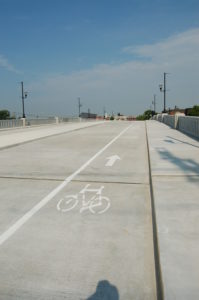

KIPDA’s bicycle and pedestrian planning process aims to reduce network gaps and increase connectivity for bicyclists and pedestrians on the transportation network. Bicycle and pedestrian planning is crucial to lowering the rates of single occupancy vehicles (SOV’s) on roadways, increasing air quality by reducing greenhouse gas emissions, reducing congestion, and providing opportunities for active transportation by encouraging people to walk or bike to their destinations.
Active Transportation Plan Underway
Complete Streets Policy
Complete Streets are roadways designed, implemented, operated, and maintained in an equitable and context-sensitive manner so that people of all ages, incomes, and abilities can use them safely. KIPDA has implemented a complete streets policy for new projects that request MPO dedicated funds. Click the button below to review KIPDA’s Complete Street Policy.
Planning Resources
In 2016, KIPDA staff created an inventory of bicycle and pedestrian facilities in the region. This inventory is used in the transportation planning process by showing where facilities are located, as well as where there are facility gaps in the network. The information gathered in the inventory can be found at the Online Resource Center.
Bicycle and Pedestrian Resource Guide was created to provide partnering agencies with an explanation of the inventory process, the connections between bicycle and pedestrian planning, and other planning resources and tools to create projects and implement policies.
